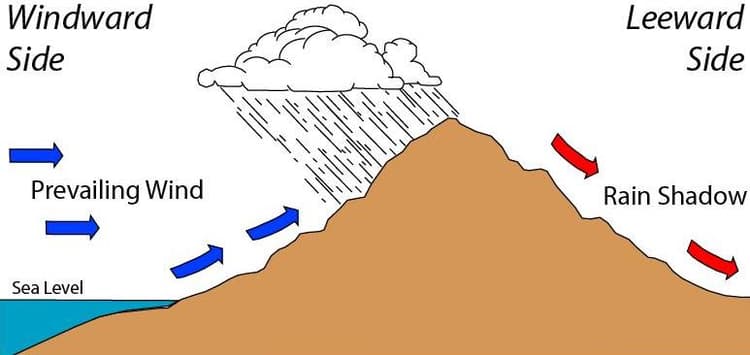Earth's Geography and Climate
Liam Thomas
6 min read
Listen to this study note
Study Guide Overview
This study guide covers geological and geographical factors influencing climate, including solar radiation, Earth's orbit, atmospheric composition (greenhouse gases), volcanic activity, ocean currents, and the rain shadow effect. It emphasizes the impact of human activities on greenhouse gas concentrations and provides practice questions on these key concepts.
#AP Environmental Science: Climate Factors - The Night Before
Hey there, future environmental champion! Let's make sure you're feeling awesome and ready for the AP exam tomorrow. We're going to break down climate factors into bite-sized, memorable chunks. Let's do this!
#☀️ Geologic and Geographic Factors Influencing Climate
#1. Solar Radiation
- The Sun: Our main energy source! 💡 Variations in solar intensity affect climate. Think about how different latitudes experience different seasons and intensities of sunlight.
- Earth's Orbit: Not a perfect circle! The elliptical orbit affects the amount of solar energy reaching Earth. Closer = more intense, further = less intense.
Solar radiation is the primary driver of Earth's climate system. Variations in solar intensity and Earth's orbit can lead to significant climate changes.
#2. Atmospheric Composition
- Greenhouse Gases: Gases like CO2 and methane trap heat. Human activities (deforestation, fossil fuels) are major contributors to increased greenhouse gas concentrations and global warming. This leads to hotter, more dangerous climates and increased natural disasters.
Remember the main greenhouse gases: CO2, methane (CH4), and water vapor (H2O). Know their sources and impacts.
#3. Volcanic Activity
- Volcanoes: Large eruptions release ash and gases that can temporarily cool the Earth by blocking solar radiation. This effect is short-lived (decades at most) and doesn't offset long-term warming.
Volcanic cooling is a short-term effect. It's not a solution to long-term climate change.
#4. Oceanic and Terrestrial Factors
- Ocean Currents: Oceans have a huge heat capacity and move heat around the globe. Warm currents can warm coastal regions, and vice versa. Think of it like a giant conveyor belt of heat.
- Land Masses: Mountains block air masses, causing temperature and precipitation differences. This leads to the rain shadow effect.
Rain Shadow Effect: Remember Warm, Wet air rises on the Windward side, cools, and precipitates. The Leeward side is Left with little moisture.
- Windward Side: Warm, moist air rises, cools, and releases precipitation.
- Leeward Side: Dry air descends, resulting in less precipitation.

#Image Courtesy of Wikimedia
Don't confuse short-term effects like volcanic cooling with long-term climate change trends. Also, remember that the rain shadow effect is caused by the interaction of air masses with topography, not just by the presence of mountains.
#Final Exam Focus
- High-Value Topics: Solar radiation, greenhouse gases, and the rain shadow effect are frequent topics on the exam.
- Connections: Understand how these factors interact. For example, how do greenhouse gases amplify the effects of solar radiation? How do landforms affect regional climate patterns?
- Time Management: Quickly identify the main point of each question. Don't get bogged down in details.
- Common Pitfalls: Pay attention to the wording of questions. Avoid making assumptions. Double-check your answers.
Practice explaining these concepts out loud. If you can teach it, you know it!
#Practice Questions
Practice Question
Multiple Choice Questions:
-
Which of the following is the primary cause of the increase in atmospheric carbon dioxide concentration over the past 150 years? (A) Volcanic eruptions (B) Deforestation (C) Burning of fossil fuels (D) Increased solar radiation (E) Ocean acidification
-
The rain shadow effect is most likely to occur on the: (A) windward side of a mountain range (B) leeward side of a mountain range (C) flat plains (D) coastal areas (E) areas close to the equator
Free Response Question (FRQ):
The burning of fossil fuels is a major contributor to climate change.
(a) Describe two specific environmental consequences of increased atmospheric carbon dioxide concentrations.
(b) Explain how the rain shadow effect influences local climate patterns.
(c) Identify one way that volcanic eruptions can affect global climate, and explain why this effect is not a long-term solution to climate change.
FRQ Scoring Breakdown
(a) (2 points)
* One point for each correct environmental consequence:
* Example 1: Increased global temperatures (global warming).
* Example 2: Ocean acidification.
* Example 3: Changes in precipitation patterns.
* Example 4: Increased frequency and intensity of extreme weather events.
(b) (2 points)
* One point for explaining the windward side receives more precipitation due to rising, cooling air.
* One point for explaining the leeward side receives less precipitation due to descending, dry air.
(c) (2 points)
* One point for identifying a way volcanic eruptions affect climate (e.g., cooling due to ash/aerosols blocking solar radiation).
* One point for explaining why this is not long-term (e.g., the effect is temporary, ash/aerosols settle out of the atmosphere, the amount of greenhouse gases released from volcanoes is lower compared to human emissions).
You've got this! Take a deep breath, trust your preparation, and go rock that exam! 💪
Continue your learning journey

How are we doing?
Give us your feedback and let us know how we can improve





